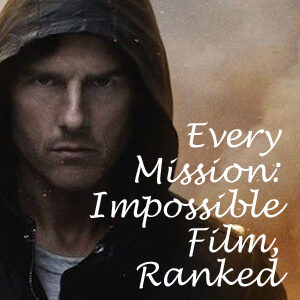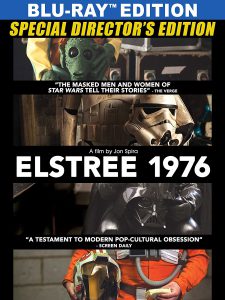“Elstree 1976” is a perfect title for this documentary about “Star Wars” bit players, because serious fans will immediately recognize it as the studio and year in which “A New Hope” was filmed. Casuals might not get the reference, and that’s good, because “Elstree 1976” is for mega-fans, and even some of those might find this 1 hour and 45 minute film gives more details about these performers than they care to know.
“Elstree 1976” is occasionally spiced up with short clips – and zoom-in shots to identify the bit players — from the film, but basically it’s just a collection of interviews with nine performers from “A New Hope,” plus Jeremy Bulloch, who first appeared in 1980’s “The Empire Strikes Back.” When the doc gets to the segment on fan-convention lifestyle, apparently Bulloch is just too big of a factor in the fan scene to be left out, even though his presence drifts from the idea of chronicling Elstree Studios in 1976.
The nine “A New Hope” performers, roughly in descending level of status, from B-list to Z-list, are:
- David Prowse as Darth Vader
- Garrick Hagon as Biggs Darklighter
- Angus MacInnes as Gold Leader
- Anthony Forrest as Fixer/Sandtrooper
- Paul Blake as Greedo
- Pam Rose as Leesub Sirln
- Laurie Goode as a stormtrooper
- John Chapman as Red 12
- Derek Lyons as Massassi Temple Guard/Medal Bearer
Through much of the documentary, filmmaker Jon Spira doesn’t seem to have any overarching point to make; he just interviews these people in-depth, giving them enough rope to show their personalities. Some unaccountably think they are hot sh*t for being in “Star Wars”; others are baffled by the idea that anyone cares they were in “Star Wars.” All are open to taking money for their autograph; indeed, Prowse says autographs are his main source of income, and Rose (who played a cantina patron whom I haven’t noticed in dozens of viewings of the film in widescreen) says she’ll be moving into a house in London for the first time thanks to the cash infusion.
The main lesson I came away with is that people of all personality types ended up on screen in “A New Hope” – some likable, some less so. And then there’s Prowse, who fits both bills.
Prowse had a weird feud with George Lucas going back to the beginning, most recently resulting in Prowse’s ban from official “Star Wars” conventions, although no one knows the details of why he’s banned. It’s well known that the former weightlifter has a bit of an ego about being Darth Vader; he signs “David Prowse IS Darth Vader” and used to express resentment about not getting to voice the Dark Lord or play him when he’s unmasked. But on the other hand, the idea that Prowse’s contribution should be buried for the sake of Vader’s mystique is also wrong; if Prowse didn’t tell everyone who would listen what he contributed to “Star Wars,” it’s unlikely that Lucas would have.
Hagon is still a compelling presence on screen. It’s no wonder that he still does a lot of voiceover work. He admits to being initially angry that his famous-among-fans “Biggs scenes” were cut from the movie, but he got over it almost immediately. Forrest notes that it’s actually kind of cool that the scenes with Fixer (another of Luke’s Tatooine contemporaries) aren’t in the movie, yet people can still watch them on YouTube. And besides, he has that “Move along. Move along” line for posterity.

“Elstree” is unfortunately short on anecdotes from the set, but one tasty recollection comes from MacInnes, who recounts sweating buckets in the X-wing cockpit when he couldn’t memorize his lines. Lucas’ solution was that the actor place the script on his lap and read from it. This explains why Gold Leader is looking down when speaking. MacInnes thinks it’s a bad acting job, but interestingly, both the sweating and the eye movements add to the performance, I think. Or perhaps “A New Hope” is so ingrained in my psyche as a “real” thing that I rationalize all the performances.
While MacInnes, Prowse and Hagon are in the closing credits, the other six are not. They are listed on IMDB as “uncredited.” Still, fans have made it clear through the decades that we are interested in knowing who played these various roles. Blake has so embraced his status that he genuinely loves the idea that his tombstone might say “Here lies Greedo.” (“Elstree” doesn’t mention it, but it’s well known to die-hards that he’s one of two Greedo actors.)
Goode’s entire role is a fun anecdote: He’s the stormtrooper who hit his head on the doorway. At least he’s fairly certain that’s him; other extras have also claimed they played the role. That’s the irony Spira is trying to get across, I think: That some of these roles are so small that the performer can’t even be positive he played the role.
Along these lines, “Elstree” raises an interesting controversy about the convention circuit: Who can legitimately claim to be a “Star Wars” “actor” and who can’t? To me, if fans want to pay for your autograph, and you aren’t lying about your status in the film, I don’t see a problem. At the same time, I understand the frustration of MacInnes, who notes that he was an actor who was hired for a speaking role, while some of the people sitting next to him at the signing table were extras from central casting. They were basically “just there.”
There’s also a clash between the masked men and those whose faces are on screen; MacInnes doesn’t understand why he plays second fiddle to Prowse, Bulloch and R2-D2 actor Kenny Baker at conventions. Neither does Bulloch, who notes that the popularity of Boba Fett is “not my fault.” My theory is that those masked characters are popular, and the person inside the suit allows fans to attach a real person to the role; without them, those characters would seem inaccessible to fans.
“Elstree” could’ve been improved with many more anecdotes from the set, something even the “just there” extras like Chapman and Lyons could’ve provided. The best we get from those two is that Mark Hamill was friendly toward everyone. And it desperately needed some on-set footage, but it’s apparent that such footage simply was not available to Spira; he uses re-enactments to add flavor, though thankfully he doesn’t overuse this gimmick.
Spira decided to make a film about 10 people, their careers in and out of film, their relative levels of success and their feelings about having small parts in “Star Wars.” By including extras who had mere milliseconds of screen time, Spira perhaps does a discredit to Hagon in particular, who is a great actor in a role beloved by fans. But even the details of Hagon’s life veer a bit too much into “who cares” territory.
On the other hand, the contrast between the guy who played Luke’s best friend and the guy who played the guy who hands the medals to Dodonna (who then hands it to Leia, who then drapes it on Luke) is important for the segment on the autograph controversy. And the fact that some of these people don’t lead documentary-worthy lives or even tell fascinating stories might be part of the point too (and also the reason for the sad undertone).
If “Elstree” was truly about the small roles and actors people cared about, it would’ve included only the first half of the above list, while adding several other faces. Perhaps the 10 in “Elstree” were those who accepted interview requests, and not 10 hand-picked by the documentarian.
At any rate, “Elstree” is still worth checking out if you’re a long-time “Star Wars” geek – I often had a smile on my face while watching it – and it comes off as fair to the interview subjects in that it lets them talk and paint their own self-portraits. And admittedly, “A New Hope” has already been obsessively documented. But I was still somewhat disappointed by how much this documentary drifts from its presumed reason for being.

